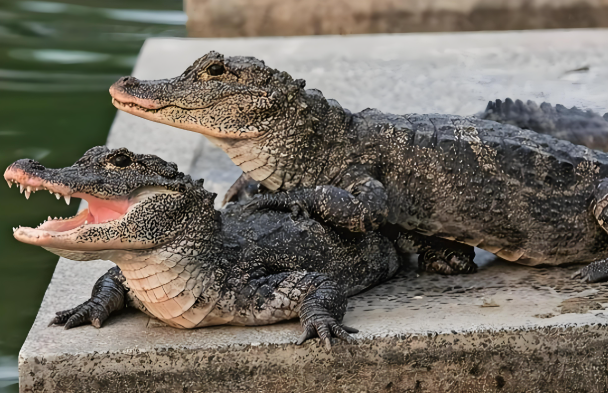The Chinese alligator, also known as the Yangtze alligator or China alligator, is a critically endangered crocodilian endemic in China. The Chinese alligator is black or dark gray in color with a fully armored body. As one of the smallest species of crocodilians in the world, it grows to 1.5 metres–2.1 metres in length and weighs 36 kilograms–45 kilograms as an adult. Females are roughly three-quarters the length of males.

The Chinese alligator is found in the Yangtze River region of China, hence the name of Yangtze alligator. Living in bodies of fresh water, particularly wetlands and ponds, the Chinese alligator is extremely restricted. By 2015, the only places in the wild where it is confirmed to inhabit had been Xuancheng (Jingxian County, Langxi County and Guangde County), Wuhu (Nanling County) in the province of Anhui. It has been reported to rarely occur in the provinces of Jiangsu and Zhejiang, but it is unknown whether it still lives there. The species previously had a wide range and population, but nearly 7,000 years ago, multiple threats, for example, habitat destruction, caused the species' population and home range to decline. Nowadays, the Chinese alligator is widely regarded as the most endangered crocodilian in the world and it is ranked as Critically Endangered on the International Union for Conservation of Nature and Natural Resources (IUCN) Red List.
China has listed the Chinese alligator as a national first-class protected animal. In order to preserve and protect this precious species, China has established nature reserves and breeding facilities for the Chinese alligator in Anhui and Zhejiang.
